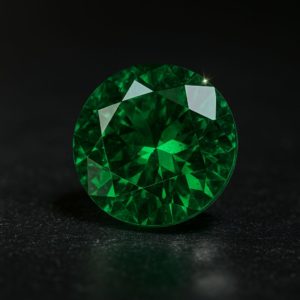EMERALD

Emerald is a variety of beryl, a mineral composed mainly of aluminium and beryllium silicate, distinguished by its intense green colour. In watchmaking and jewellery, emerald is prized for its unique beauty and fascinating properties, although it is used less frequently than other precious stones such as diamond or sapphire.
Properties of emerald
- Origin and composition: Emerald is a precious stone belonging to the beryl family. Its characteristic green colour comes from the presence of chromium or vanadium, which give the stone its distinctive hue. Emerald is one of the rarest gemstones due to its unique chemical composition and the scarcity of its deposits. The main sources of emeralds used in jewellery are Colombia, Brazil, Zambia, and Zimbabwe.
- Physical properties: Emerald is relatively hard, scoring 7.5 to 8 on the Mohs scale, which makes it a durable stone, though slightly more fragile than other stones such as corundum (sapphire, ruby) or diamond. Its transparency is often interrupted by natural inclusions, known as the jardin, which give each stone a unique character. These inclusions, though sometimes perceived as flaws, are generally accepted and even valued, as they attest to the authenticity of the emerald. They also make emeralds more fragile and brittle than other gemstones.
- Colour and clarity: The colour of emerald is its primary aesthetic attribute. Shades range from pale yellow-green to deep green, with the most sought-after stones exhibiting a rich, saturated hue. High-quality emeralds should display intense, even colour without overly dark or light zones. However, clarity remains a challenge, as inclusions are common in this gemstone. Stones that are nearly inclusion-free, known as “eye-clean” gems, are rare and extremely valuable.
Emerald in watchmaking
Due to its relative fragility and high price, emerald is used exclusively for decorative purposes, most often set into dials or the exterior of high-jewellery watches.
Fragility
Although relatively hard, emerald is more fragile than stones like diamond or sapphire because of its natural inclusions. This makes it susceptible to chipping or cracking if subjected to a strong impact or excessive pressure.
